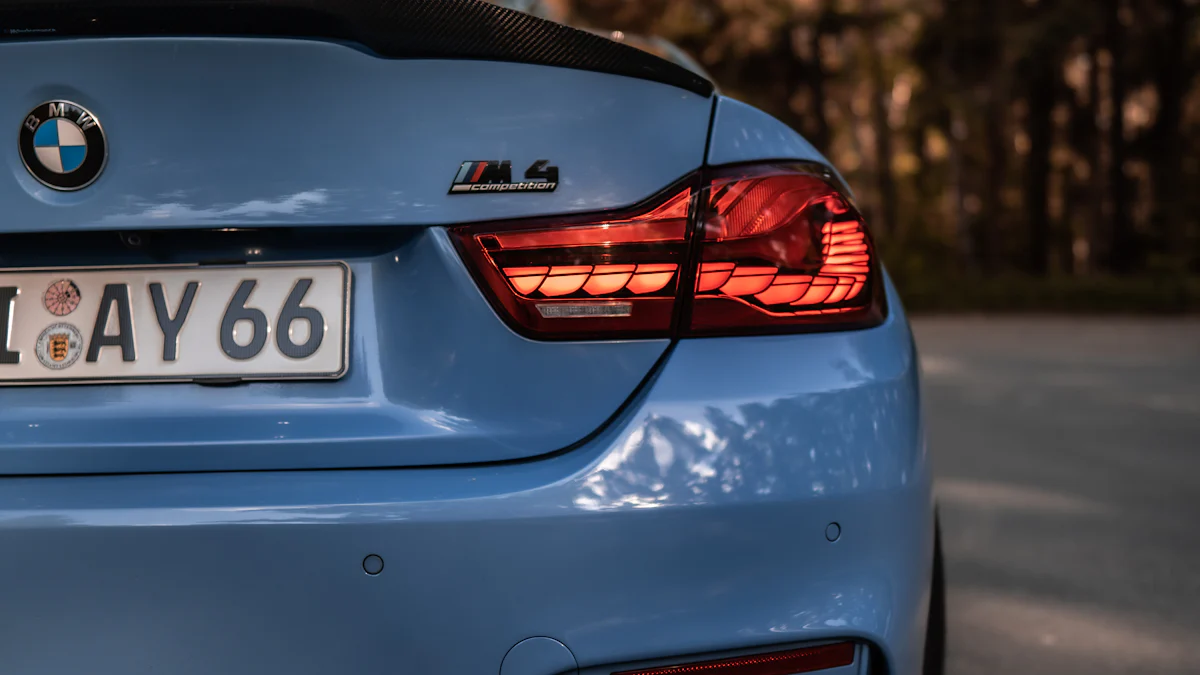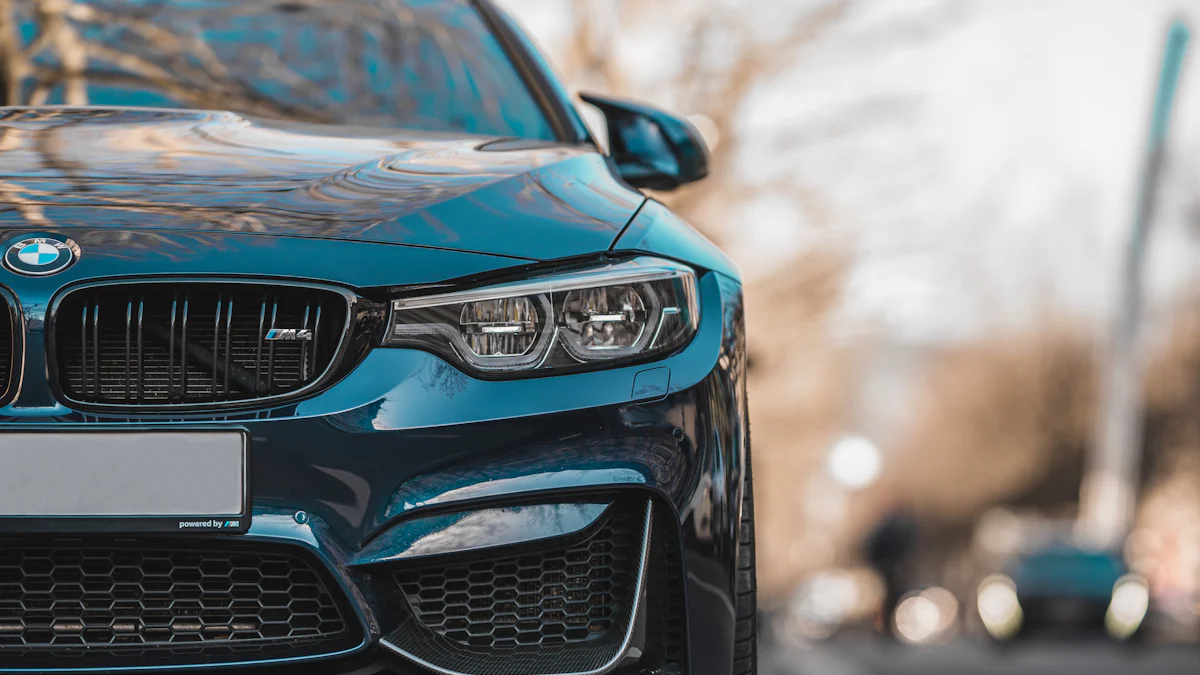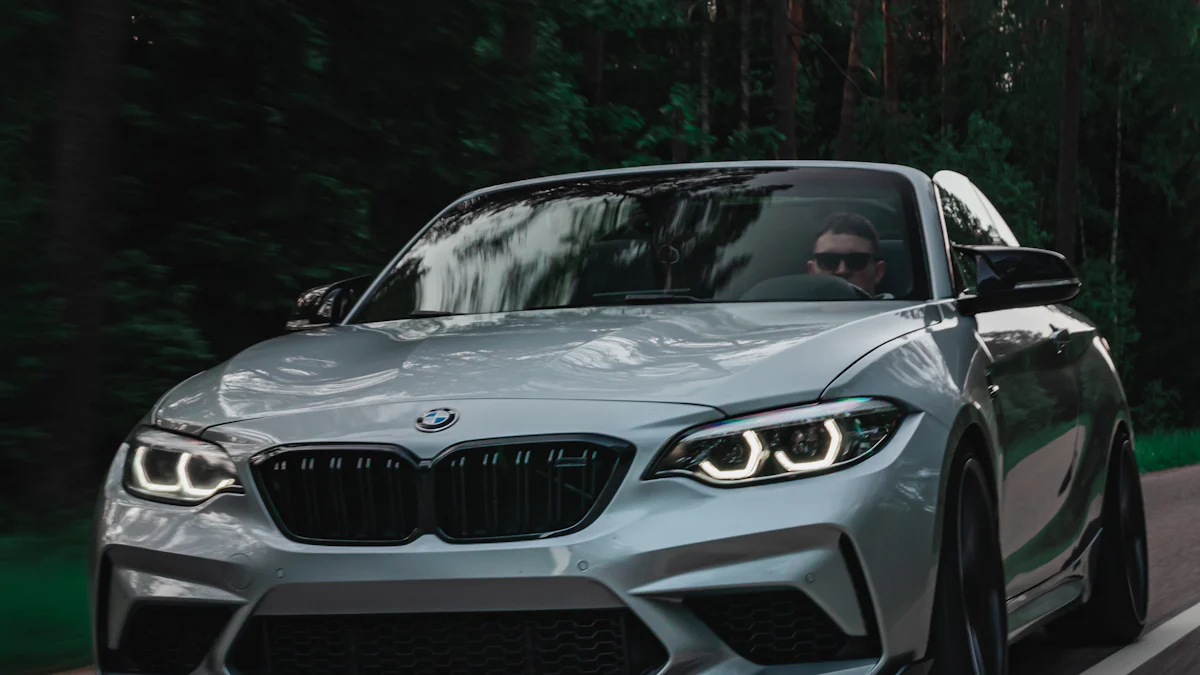كيف يمكنني إزالة ممتص الصدمات BMW وتركيبه

Replacing a damaged BMW bumper doesn’t have to be overwhelming. Whether it’s a minor fender bender or wear and tear, swapping out the bumper yourself can save you hundreds of dollars. For instance, a new rear bumper from a dealer might cost $400-$500, but professional replacement could push the total to $1,700 or more. Tackling this task on your own not only cuts costs but also gives you control over the process. With the right tools and a bit of patience, you’ll have your BMW looking as good as new in no time.
الوجبات الرئيسية
Replacing a BMW bumper yourself can save you hundreds of dollars compared to professional services.
Gather essential tools like screwdrivers, a socket wrench set, and trim removal tools to ensure a smooth replacement process.
Always prioritize safety by disconnecting the car battery and working on a flat, stable surface.
Document the disassembly process with photos to guide you during reassembly, especially for electrical connections.
If you encounter misalignment, loosen the bolts and adjust the bumper until it fits flush before tightening.
Take your time during installation to ensure proper alignment and secure all components for a professional finish.
Don’t hesitate to seek help from a friend or family member when lifting and positioning the bumper to avoid damage.
Tools and Preparation for Replacing a BMW Bumper

Before you dive into replacing your BMW bumper, it’s essential to gather the right tools and prepare your workspace. Proper preparation ensures the process goes smoothly and minimizes the risk of damage to your vehicle or injury to yourself. Let’s break it down step by step.
Essential Tools for the Job
Having the correct tools on hand makes all the difference. Here’s what you’ll need:
Screwdrivers (flathead and Phillips): These are crucial for removing screws and clips holding the bumper in place. A flathead screwdriver can also help with prying off stubborn clips.
Socket wrench set: You’ll use this to remove bolts that secure the bumper to the car’s frame. Make sure the set includes various sizes to match the bolts on your BMW.
Trim removal tools: These tools help you safely detach plastic clips and trim pieces without causing damage. They’re especially useful for delicate parts.
Torque wrench: This ensures you tighten bolts to the manufacturer’s specifications during reassembly. Proper torque prevents over-tightening or loosening over time.
Protective gloves and safety goggles: These protect your hands from sharp edges and your eyes from debris while working on the bumper.
Having these tools ready will save you time and frustration. If you’re missing any, check your local hardware store or online retailers for the parts required.
Safety Precautions to Follow
Safety should always come first when working on your car. Follow these precautions to avoid accidents and ensure a smooth process:
Disconnect the car battery: Before starting, disconnect the battery to prevent electrical issues. This is especially important if your bumper has sensors or lights connected to it.
Park on a flat, stable surface: Make sure your car is parked securely on level ground. This prevents the vehicle from shifting while you work.
Use a jack stand if needed: If you need better access to the underside of the bumper, use a jack stand to lift the car. Never rely solely on a jack, as it can fail unexpectedly.
By following these steps, you’ll create a safe and efficient environment for replacing your BMW bumper. Preparation is key to avoiding unnecessary complications and ensuring the job gets done right.
Removing the BMW Bumper Cover
Removing the bumper cover from your BMW might seem tricky, but breaking it into smaller steps makes it manageable. This part of the process requires attention to detail and patience to avoid damaging any components. Let’s dive into how you can locate and remove the fasteners, then detach the bumper cover safely.
Locating and Removing Fasteners
The first step in front bumper removal is identifying the fasteners holding the bumper cover in place. These fasteners are typically screws or clips positioned along the edges of the bumper. Here’s how you can handle this step:
Inspect the edges of the bumper: Look closely at the top, bottom, and sides of the bumper. You’ll find screws near the wheel wells and clips along the grille area.
Use the right tools: Grab a trim removal tool for the clips and a screwdriver for the screws. The trim removal tool helps you pop the clips out without breaking them.
Work carefully: Start with one side and move systematically. Avoid applying too much force, as this could damage the clips or surrounding areas.
نصيحة محترف: If you encounter stubborn clips, gently wiggle the trim removal tool while applying light pressure. This technique reduces the risk of snapping the clips.
Detaching the Bumper Cover
Once the fasteners are out, you’re ready to detach the bumper cover. This step requires a steady hand and some caution to ensure you don’t damage the bumper or connected components.
Start at the edges: Gently pull the bumper cover away from the car, beginning at one corner. Work your way across the bumper, releasing it section by section.
Check for electrical connections: Modern BMWs often have parking sensors or fog lights integrated into the المصد الأمامي. As you pull the bumper away, look for wires connected to these features.
Disconnect the wires: Carefully unplug any electrical connections. Most connectors have a tab you need to press to release them. Take your time to avoid damaging the wires or connectors.
Mechanic Insight: According to a mechanic from the ZHPMafia Forum, aligning the bumper during reinstallation is easier if you keep track of how the bumper fits into the guides at the fender corners. This tip can save you time later.
By following these steps, you’ll have the bumper cover off in no time. Remember, the key is to stay organized and handle each component with care. Once the cover is removed, you’re ready to move on to the next stage of the front bumper removal process.
Detaching the Front Bumper
Once you’ve removed the bumper cover, it’s time to tackle the front bumper itself. This part of the process requires precision and care to avoid damaging your car or the new bumper. Let’s break it down into two simple steps: removing the mounting bolts and lifting the bumper off.
Removing Mounting Bolts
The front bumper is secured to the car’s frame with bolts, and removing these is your first task. Here’s how you can do it:
Locate the bolts: Check underneath the bumper and near the wheel wells. These bolts are often hidden, so take your time to inspect the area thoroughly.
Grab your socket wrench: Use a socket wrench to loosen and remove the bolts. Make sure you’re using the correct size socket to avoid stripping the bolts.
Stay organized: Place the bolts and washers in a small container or bag. Keeping track of these parts will make reassembly much easier later.
نصيحة محترف: If a bolt feels stuck, apply a bit of penetrating oil and let it sit for a few minutes. This will loosen the rust or debris causing the resistance.
Lifting the Bumper Off
With the bolts removed, you’re ready to lift the bumper off the car. This step is easier with an extra pair of hands, so ask a friend or family member to assist you.
Work together: Stand on opposite sides of the bumper. Lift it gently and evenly to avoid bending or scratching any parts.
Inspect the mounting points: Once the bumper is off, take a moment to examine the mounting points on the car’s frame. Look for any signs of damage, rust, or debris that could interfere with the installation of the new bumper.
Set the bumper aside: Place the old bumper on a soft surface, like a blanket or cardboard, to prevent scratches or dents.
Mechanic Insight: According to a guide shared on Bimmerforums, using a flat object to unclip the bumper from the fender can help during removal. Just be gentle to avoid breaking the clips.
By following these steps, you’ll have the front bumper removed without any hassle. Taking your time and staying organized will ensure a smooth transition to the next phase of the replacement process.
Installing the New BMW Bumper

Now that you’ve removed the old bumper, it’s time to install the new one. This step requires precision and patience to ensure everything fits perfectly. Let’s break it down into two key parts: aligning the bumper and securing it in place.
Aligning the New Bumper
Proper alignment is crucial for a seamless fit. Follow these steps to position the new bumper correctly:
Position the bumper carefully: Hold the new bumper and align it with the mounting points on your car. Pay close attention to the edges near the fenders and grille. These areas should sit flush without any gaps.
Check electrical connections: If your BMW has parking sensors, fog lights, or blind spot sensors, make sure the wires are accessible. You’ll need to reconnect them later, so don’t let them get tucked away or pinched during alignment.
نصيحة محترف: Take your time during this step. Misalignment can lead to uneven gaps or difficulty securing the bumper later. A helper can make this process much easier by holding one side while you adjust the other.
Securing the Bumper
Once the bumper is aligned, it’s time to secure it firmly to the car. Here’s how you can do it:
Reattach the mounting bolts: Use your socket wrench to insert the bolts into the mounting points. Tighten them lightly at first to hold the bumper in place. This allows you to make final adjustments before fully securing it.
Use a torque wrench for proper tightness: Once everything looks aligned, grab your torque wrench to tighten the bolts to the manufacturer’s specifications. This ensures the bolts are neither too loose nor overtightened, which could cause damage over time.
Double-check the alignment: Before you finish, step back and inspect the bumper from different angles. Look for any uneven gaps or misaligned edges. If needed, loosen the bolts slightly and make adjustments.
Mechanic Insight: According to BMW’s body repair manual, avoid using excessive paint or fillers near sensors on the bumper. These can interfere with the functionality of features like blind spot detection or lane change warnings.
By following these steps, you’ll successfully install the front bumper on your BMW. Taking your time and paying attention to detail will ensure a professional-looking result. Once the bumper is secure, you’re ready to move on to reattaching the bumper cover and completing the process.
Reattaching the Bumper Cover
Reattaching the bumper cover is the final step in restoring your BMW’s sleek appearance. This process requires careful attention to detail to ensure everything fits securely and functions properly. Let’s break it down into two straightforward parts: reconnecting electrical components and securing the bumper cover.
Reconnecting Electrical Components
Before snapping the bumper cover back into place, you need to reconnect any electrical components that were disconnected during removal. Follow these steps to get it done right:
Locate the wires: Check for any disconnected wires, such as those for parking sensors, fog lights, or other features. These wires are usually tucked near the edges of the bumper.
Reconnect carefully: Plug each wire back into its corresponding connector. Most connectors have a small tab or clip that locks them in place. Ensure they click securely to avoid loose connections.
Test the connections: Once everything is reconnected, turn on your car and test the sensors or lights. This step ensures all components are functioning properly before you secure the bumper cover.
نصيحة سريعة: If you notice any slack in the wires, gently adjust them to prevent pinching when the bumper cover is reattached. For example, some BMW models with ultrasonic sensors may require extra care to avoid damaging the plastic cable mounts.
Securing the Bumper Cover
With the electrical components reconnected, it’s time to secure the bumper cover. This step involves aligning and fastening it to the car for a snug fit.
Align the cover: Position the bumper cover against the car, starting at the center. Ensure the edges near the fenders and grille line up perfectly. Misalignment can cause gaps or uneven edges.
Snap it into place: Begin snapping the cover back onto the car, starting from the center and working outward. Apply firm but gentle pressure to avoid cracking the plastic clips.
Reinsert screws and clips: Use the screws and clips you removed earlier to secure the cover. Tighten them securely, but don’t overtighten, as this could damage the threads or surrounding material.
نصيحة محترف: If the cover doesn’t snap in easily, double-check the alignment. Forcing it into place can damage the clips or create an uneven fit.
By following these steps, you’ll have your bumper cover reattached in no time. Taking your time and testing everything along the way ensures a professional-looking result. Once finished, step back and admire your work—you’ve just completed a key part of your BMW’s bumper replacement process!
Tips and Troubleshooting for BMW Bumper Replacement
Replacing a BMW bumper can feel like a big task, but knowing how to handle common challenges and using a few pro tips can make the process much smoother. Let’s dive into some practical advice to help you troubleshoot issues and work efficiently.
Addressing Common Challenges
Even with careful preparation, you might encounter a few bumps along the way. Here’s how to tackle some of the most frequent problems:
Stripped screws or broken clips – use replacement parts as needed.
Stripped screws or broken clips can slow you down, but they’re not the end of the world. If a screw gets stripped, try using a screw extractor tool to remove it. For broken clips, head to your local auto parts store or check online for replacements that match your BMW model. One BMW owner shared how the plastic parts around the screws on their bumper ripped, making it impossible to secure the bumper properly without new clips. Replacing these small parts ensures a secure fit and prevents future issues.
Misaligned bumper – loosen bolts and realign before tightening.
Misalignment is another common hiccup. If your bumper doesn’t sit flush with the fenders or grille, don’t panic. Loosen the mounting bolts slightly and adjust the bumper until it lines up perfectly. Tighten the bolts once everything looks right. A mechanic on Bimmerforums suggests paying close attention to how the bumper fits into the guides at the fender corners during reassembly. This small detail can save you time and frustration.
نصيحة سريعة: Always step back and inspect the alignment from different angles before tightening everything. This helps you catch any uneven gaps early.
Pro Tips for a Smooth Process
Want to make the job even easier? These pro tips can save you time and effort while ensuring a professional-looking result.
Take photos during disassembly to guide reassembly.
Before you start removing screws, clips, or wires, grab your phone and snap a few pictures. Documenting each step will give you a visual reference when it’s time to put everything back together. This is especially helpful for reconnecting electrical components like parking sensors or fog lights. One DIY enthusiast shared how photos saved them from hours of guesswork during reassembly.
Use a helper to hold the bumper during removal and installation.
Bumpers can be bulky and awkward to handle alone. Enlist a friend or family member to help you lift and position the bumper. This reduces the risk of dropping it or scratching your car. One driver shared how their mechanic buddy helped them replace and repaint a damaged bumper for a fraction of the cost quoted by local shops. Having an extra set of hands not only makes the process easier but also helps you avoid costly mistakes.
Pro Insight: When lifting the front bumper off, work together to lift it evenly. Uneven pressure can damage the mounting points or clips.
By addressing challenges head-on and following these tips, you’ll breeze through your BMW bumper replacement. Staying organized, working carefully, and asking for help when needed will ensure a smooth and successful process.
Replacing a BMW bumper might seem daunting, but with the right tools and preparation, you can handle it confidently. By following the steps outlined in this guide, you’ll ensure proper alignment and secure installation, giving your car a polished, professional look. Always double-check your work, especially the bolts and electrical connections, to avoid future issues. If you run into challenges, don’t hesitate to seek help from a trusted mechanic. Taking your time and staying organized will make the process smoother and more rewarding.
الأسئلة الشائعة
How much does it cost to replace a BMW bumper?
Replacing a BMW bumper can vary in cost depending on whether you choose a dealership or an independent shop. For example, a new rear bumper from a dealer might cost around $400-$500. However, professional replacement, including labor and paint matching, could bring the total to $1,700 or more. If you’re looking to save money, consider purchasing the bumper yourself and having it painted and installed by a trusted body shop.
نصيحة: Always ask for an itemized quote to understand what’s included in the price, such as reinforcement components, fitting, and finishing.
Is it better to repair or replace a damaged bumper?
This depends on the extent of the damage. Minor scratches or dents can often be repaired for less than $800, especially if the paint doesn’t require extensive matching. However, if the bumper has structural damage or cracks, replacing it is usually the better option. Many BMW owners prefer replacing the bumper to ensure a flawless finish and avoid potential issues with hidden damage.
Pro Insight: One BMW owner shared that repairing their Black Sapphire Metallic bumper cost $780 but didn’t include hidden damage. They opted for a new bumper to ensure a perfect paint match and avoid future headaches.
Can I replace a BMW bumper myself?
Yes, you can replace a BMW bumper yourself if you have the right tools and follow a step-by-step guide. Doing it yourself can save you hundreds of dollars in labor costs. However, you’ll need patience and attention to detail, especially when aligning the new bumper and reconnecting electrical components like parking sensors or fog lights.
نصيحة سريعة: Take photos during disassembly to guide you during reassembly. This can save time and prevent mistakes.
How long does it take to replace a BMW bumper?
Replacing a BMW bumper typically takes 2-4 hours for someone with basic mechanical skills. The time depends on factors like your experience, the tools available, and whether you encounter any challenges, such as stuck bolts or misaligned parts. If you’re new to DIY car repairs, plan for extra time to ensure everything is done correctly.
Do I need special tools to replace a BMW bumper?
You don’t need highly specialized tools, but having the right equipment makes the job easier. Essential tools include screwdrivers, a socket wrench set, trim removal tools, and a torque wrench. Protective gloves and safety goggles are also recommended to keep you safe during the process.
نصيحة محترف: Invest in a trim removal tool to avoid damaging clips and plastic components during disassembly.
How can I ensure the paint matches when replacing a bumper?
To ensure a perfect paint match, work with a reputable body shop that specializes in BMW vehicles. BMW uses specific paint codes, so it’s crucial to provide this information to the shop. Some owners prefer having the bumper painted off the car to avoid overspray and achieve a cleaner finish.
Owner’s Experience: One BMW enthusiast shared how they purchased a new bumper, had it painted separately, and then installed it themselves to minimize potential issues with overspray.
What should I do if my bumper doesn’t align properly?
If your bumper doesn’t align correctly, loosen the mounting bolts slightly and adjust the bumper until it fits flush with the fenders and grille. Tighten the bolts once everything looks even. Misalignment often happens if the guides at the fender corners aren’t seated properly.
نصيحة سريعة: Step back and inspect the alignment from different angles before securing the bolts. This helps catch any uneven gaps early.
Can I reuse the old clips and screws when installing a new bumper?
You can reuse clips and screws if they’re in good condition. However, it’s a good idea to inspect them for wear or damage. Broken clips or stripped screws can compromise the bumper’s fit and stability. Replacement parts are inexpensive and widely available at auto parts stores or online.
Should I disconnect the battery before replacing the bumper?
Yes, disconnecting the battery is a smart safety precaution, especially if your bumper has electrical components like parking sensors or fog lights. This prevents accidental short circuits or damage to the electrical system while you work.
Is it worth going to a BMW dealership for bumper replacement?
Going to a BMW dealership ensures you get genuine parts and professional service, but it’s often more expensive. Independent body shops can offer quality work at a lower cost, especially if you supply the bumper yourself. Consider your budget and the complexity of the repair when deciding.
Pro Insight: One BMW owner shared that their dealership quoted $1,700 for a front bumper replacement, while an independent shop offered a similar service for significantly less.
